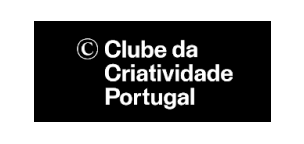I work with creative writing. But the day-to-day demands of my job limit my search for ideas
RABBIT BRAIN, TURTLE MIND
When I started working in creative writing, I turned John Cleese’s book “Creativity – A Practical and Fun Guide” into my bible. Discover more publications by this author: https://www.goodreads.com/author/list/11777.John_Cleese
It was this work that introduced me to a theory formulated by Guy Claxton: “Rabbit Brain, Turtle Mind.”
I propose to my readers that they accompany me in deconstructing this dichotomy. On one hand, the rabbit brain allows us to understand issues, weigh pros and cons, develop arguments, and solve problems. It’s our rational side, a mode of thinking that we activate almost unconsciously. On the other hand, the “Turtle Mind” is presented as a slower, less intentional, more playful way of thinking. It’s, in short, our dreamy side and also the one that sustains creativity.
TURTLE MIND: THE YEAST OF CREATIVITY
It’s easy to have a tendency to undervalue the “Turtle Mind,” associating it with something akin to daydreaming, something adverse to productivity. However, creative writing requires this playful spirit. To fetch ideas, one must enter an almost meditative state, let go, transition to a different rhythm, adopt a more passive and observant position toward the world around them. To be creative, I need to make room for the “Turtle Mind,” and that requires time. Yet, time is the scarcest resource for those working in an agency.
CREATIVE WRITING AGAINST THE CLOCK
In this frenetic pace that marks the daily lives of creatives, the “Turtle Mind” becomes a utopia and is cannibalized by the “Rabbit Brain” in response to the urgency of requests.
For example, it took me several months to write this article. I slowed down, rambled, traveled through the branching paths of thought to carefully and meticulously explore each idea. But that was only possible because the request was made well in advance, giving me time to savor the “Turtle Mind.”
The situation changes when a client requests a follower acquisition campaign from today to tomorrow. If time is short, a more reactive and less contemplative creative process is required.
THE HARE AND THE TORTOISE: A DILEMMA
Experts say that until that idea is found, the path is a constant dialectic between the “Rabbit Brain” and the “Turtle Mind”: allowing oneself to wander for a while and then taking an analytical look at what has been done to filter ideas. And this game is repeated until a satisfactory result is obtained.
And how is this time-consuming process reconciled without slowing down the fast pace that agency work demands?
If the “Turtle Mind” is so essential for creative writing but seems so difficult to apply in reality, I am faced with the following paradox: my work requires creativity while limiting it at the same time. The circumstances of daily life stifle the “Turtle Mind” and, consequently, the originality of ideas.
After a few years of pondering this issue, I have not yet found a constructive conclusion for this article. This is a plea for help. All contributions to help me resolve this impasse will be greatly appreciated. Please share your ideas with us.”




